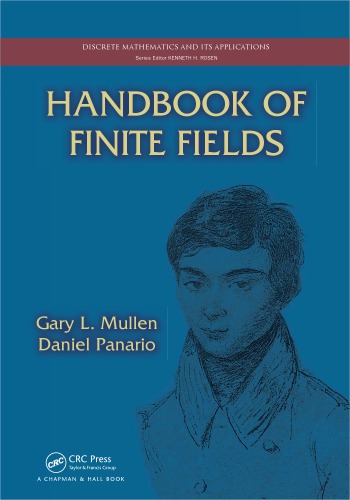

Most ebook files are in PDF format, so you can easily read them using various software such as Foxit Reader or directly on the Google Chrome browser.
Some ebook files are released by publishers in other formats such as .awz, .mobi, .epub, .fb2, etc. You may need to install specific software to read these formats on mobile/PC, such as Calibre.
Please read the tutorial at this link. https://ebooknice.com/page/post?id=faq
We offer FREE conversion to the popular formats you request; however, this may take some time. Therefore, right after payment, please email us, and we will try to provide the service as quickly as possible.
For some exceptional file formats or broken links (if any), please refrain from opening any disputes. Instead, email us first, and we will try to assist within a maximum of 6 hours.
EbookNice Team

Status:
Available4.5
5 reviews"Preface The CRC Handbook of Finite Fields (hereafter referred to as the Handbook) is a reference book for the theory and applications of nite elds. It is not intended to be an introductory textbook. Our goal is to compile in one volume the state of the art in research in nite elds and their applications. Hence, our aim is a comprehensive book, with easy-to-access references for up-to-date facts and results regarding nite elds. The Handbook is organized into three parts. Part I contains just one chapter which is devoted to the history of nite elds through the 18-th and 19-th centuries. Part II contains theoretical properties of nite elds. This part of the Handbook contains 12 chapters. Chapter 2 deals with basic properties of nite elds; properties that are used in various places throughout the entire Handbook. Near the end of Section 2.1 is a rather extensive list of recent nite eld-related books; these books include textbooks, books dealing with theoretical topics as well as books dealing with various applications to such topics as combinatorics, algebraic coding theory for the error-free transmission of information, and cryptography for the secure transmission of information. Also included is a list of recent nite eld-related conference proceedings volumes. Chapter 2 also provides rather extensive tables of polynomials useful when dealing with nite eld computational issues. The website http://www.crcpress.com/product/isbn/ 9781439873786 provides larger and more extensive versions of the tables presented in Section"--